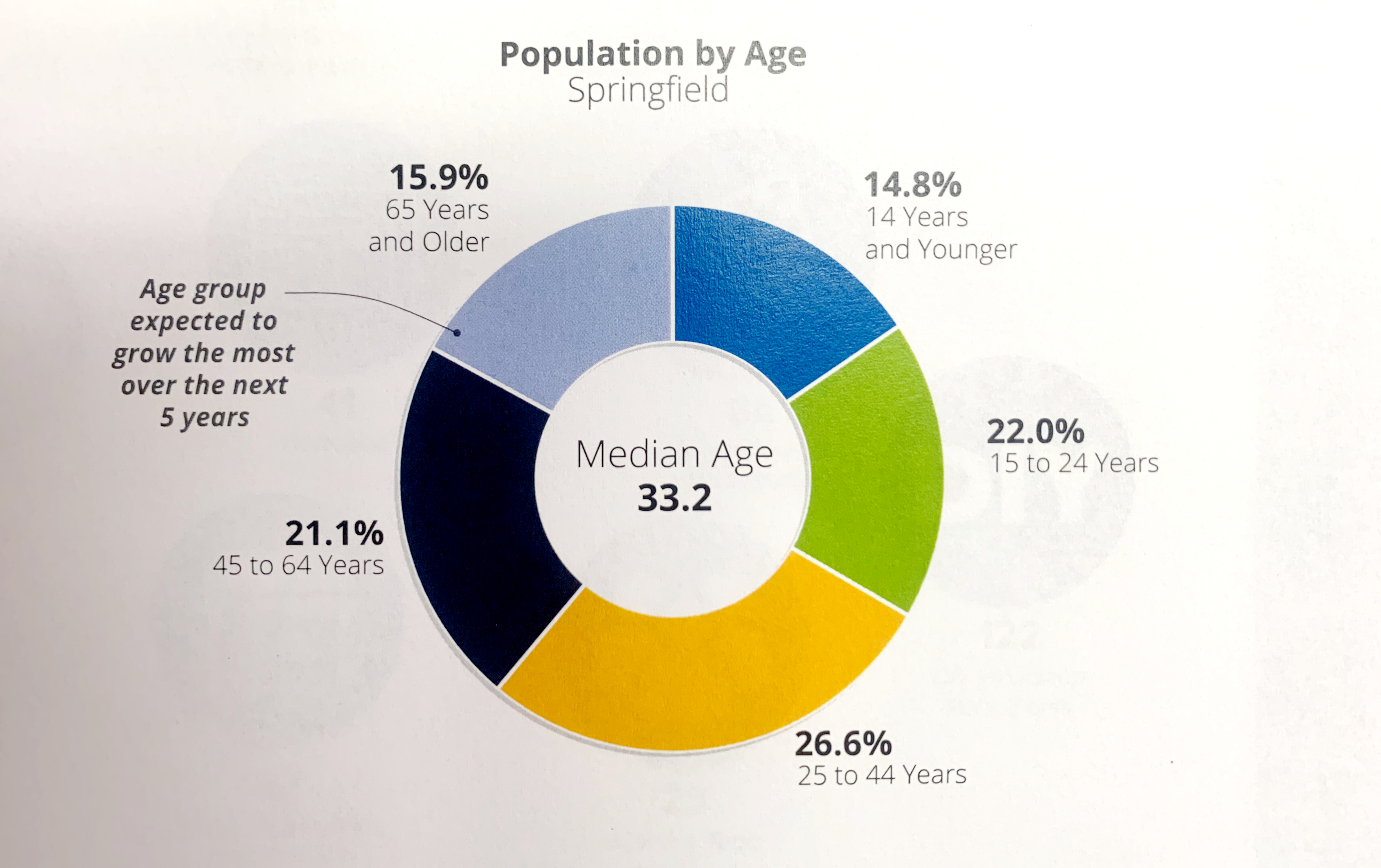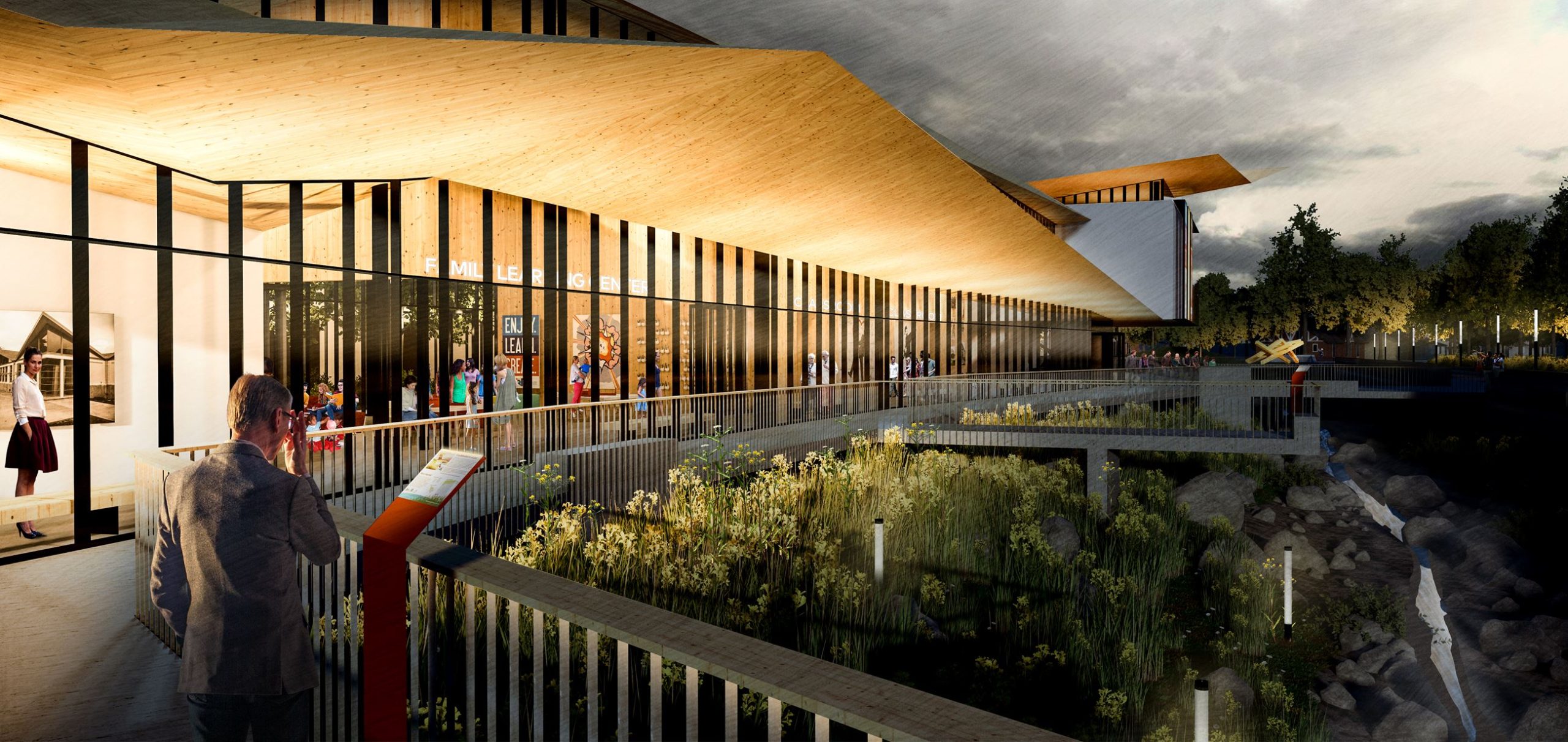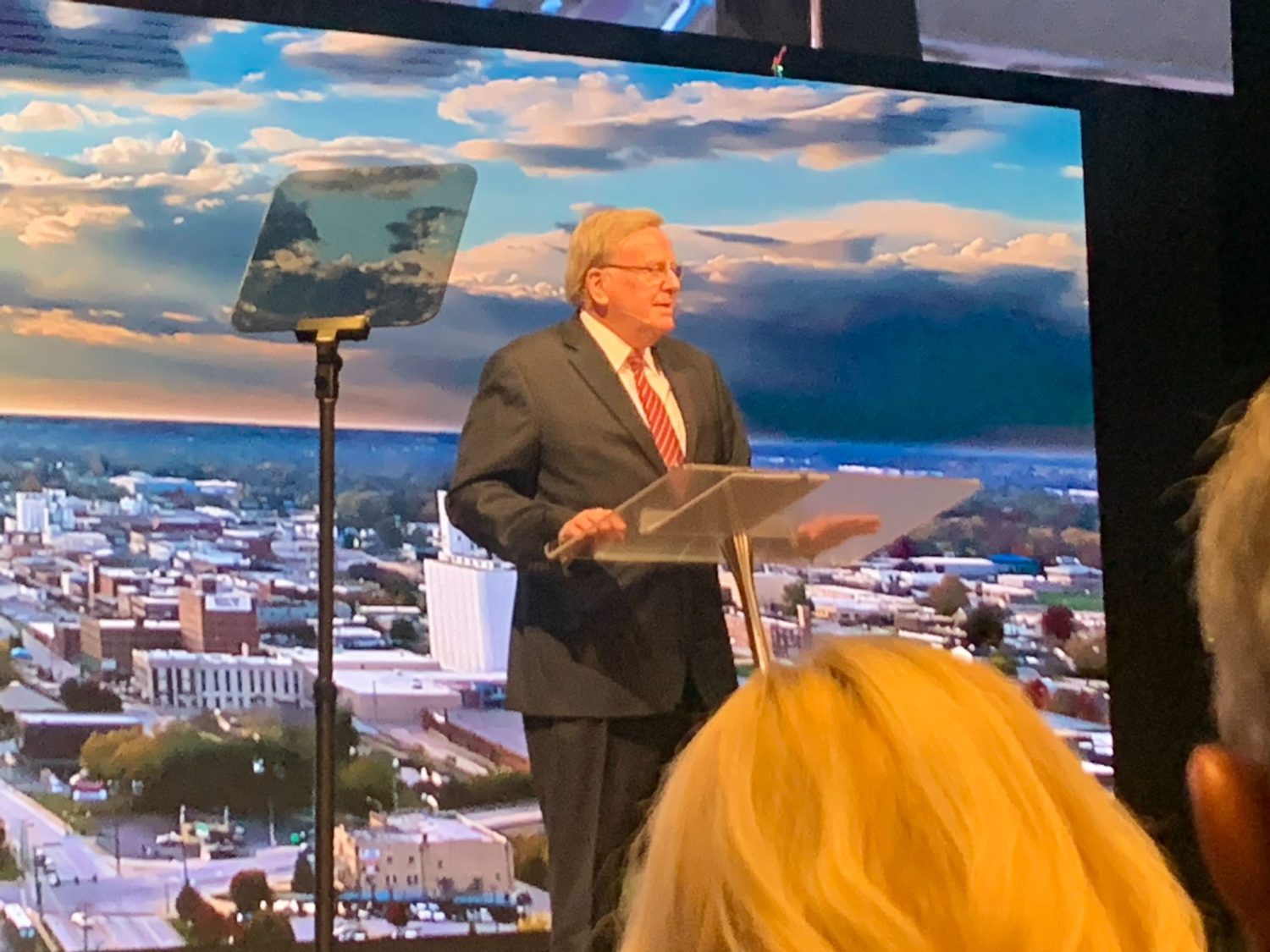Since the surrounding Ozarks are full of opportunities for adventure and expedition, the people planning Springfield’s future want to establish the city as the “Basecamp of the Ozarks,” a jumping off point for a life well lived.
More than 60 people met at Lincoln Hall on the campus of Ozarks Technical Community College June 2 for a four-hour presentation on Forward SGF, the comprehensive plan that has been in development for three years and the plan that will be Springfield’s navigation map to 2040.
The full plan will be revealed to the public with a series of events in July and August, with the Springfield City Council scheduled to adopt the plan formally by ordinance Oct. 3. The plan will go to the Springfield Planning and Zoning Commission for consideration on Sept. 15.
Springfield Director of Quality of Place Initiatives Tim Rosenbury explained the basecamp concept, where people in Springfield can feel connected to Springfield’s features, and the people who move to Springfield choose “place over profession,” when it comes to selecting housing.
“If people can work for anyone from anywhere, they’re going to choose the kind of place they want to be, and that is a place that exudes quality of place,” Rosenbury said.
Springfield Principal Planner Randall Whitman shared that the planning process was stretched by the public health concerns of the COVID-19 pandemic, particularly in 2020.
“We had about a year there that cost us some valuable time, but we are close to putting a bow on this,” Whitman said.

The planning office is doing a final internal review of the Forward SGF master plan document.
“Right now, we’re actually doing our final draft, or review of the final draft,” Whitman said. “Once those edits are made, we’ll convene meetings with the advisory teams for the overall Forward SGF, Commercial Street and downtown, and we’ll give them an opportunity to provide direct feedback on the draft.”
Three words used to guide decisions
“Quality of place” is a phrase bandied about frequently in Springfield City Council meetings and throughout the 200-plus-page Forward SGF draft document shared with participants at the meeting June 2.
“Quality of place will be our guiding principle going forward,” Rosenbury said. “When we talk about developing our community, it’s about developing a memorable, unique place that is done at a high-quality level.”
Place quality, Rosenbury said, is measured in a community’s ability to house neighborhoods full of amenities and commercial districts.
“I would also add to that parks, municipal facilities, thoroughfares and gateways and entrances,” Rosenbury said. “Quality of place is the north star for Forward SGF. It is what is going to guide us in the future. It is the single biggest determinant to sustained community prosperity.”
The final draft of Forward SGF will be used to communicate Springfield’s vision for itself, to inform developers looking at Springfield about what sort of economic environment they will be getting into, to set the framework for development regulations, to coordinate initiatives on housing and recreation, to point out opportunities for investment and to help the Springfield City Council and other government groups set their budgets each year.
“This plan does not have a series of big, big changes proposed to the community, big developments or big projects,” Rosenbury said. “It has a number of smaller initiatives and local initiatives, but the big change is going to be in our attitude and in our aspirations.”
Springfield residents sounded off
Project Manager Brandon Nolin of Chicago-based consulting firm Houseal Lavigne Associates walked members of the Springfield City Council and a host of appointed officials through the plan in a single afternoon. He started with a history of the planning process.
The work started with consultants surveying and meeting with Springfieldians in 2019 to get a feel for the city’s present conditions.
“We had a series of really excellent visioning workshops with hundreds and hundreds of people showing up,” Nolin said. “I think between three different major events we had 800 people, so tremendous response from the Springfield community throughout this process.”

The consultants recorded more than 10,000 interactions with Springfield residents, about 2,400 of which were done in person, and 7,600 pieces of input came from online surveys and forums. Nolin said it was one of the most publicly-engaged projects Houseal Lavigne has done.
“In a lot of ways, our existing ordinances and standards have gotten us where we are, and there are a lot of people we heard during the community engagement piece saying, ‘Where we are is not where we want to be; we want to raise the bar for ourselves and for our future,’” Rosenbury said.
Plans within the master plan
The comprehensive plan has 13 chapters, with chapters dedicated to land use, community outreach organizations, economic development, plans for certain key areas of the city, a transportation and transit plan, a downtown plan, a public facilities plan and plans for parks, greenways and natural resources.
There are specific plans to revitalize parts of Commercial Street, Trafficway, West Chestnut Expressway, North Glenstone Avenue and the downtown area surrounding Park Central Square.
“We are going to need to muster the courage to make strategic investments to our thoroughfares, our roadways, our parks, those places that create an impression of our community,” Rosenbury said. “Yes, that’s for visitors, but it’s also for ourselves, because out of that impression comes a sense of community pride.”
The land-use plan contains what Rosenbury described as an important philosophical change, a change with the potential to set off years — if not decades of gradual changes to Springfield’s building codes and zoning regulations.

“Our current zoning ordinance is highly specific on use and limits on what you can build on a site, but it’s not very specific at all on how you build a building, what you build it of, the level of quality,” Rosenbury said. “What we are doing is we are exchanging those priorities.”
This casts a vision that would, in theory, flip Springfield’s planning and zoning philosophy. Instead of governing land use, Rosenbury said planning and zoning development according to Forward SGF would scrutinize the quality of construction and the techniques contractors use.
“The requirements for quality are fairly low, but the prescriptions for use are fairly high and tight,” Rosenbury said of the present building codes. “What we’re trying to do is change that in time with the new zoning ordinance that says you can do more on your site so long as you honor the place in which you’re building, and honoring it with quality construction and quality design.”
Neighborhood identity and ownership
For Forward SGF to truly work, and for Springfield to be the basecamp of the Ozarks, the planners say Springfield residents will need to be stewards of the environment. That also means they will need to be stewards of their neighborhoods.
“We know of neighborhoods and districts where increased maintenance is needed and care for community elements. The natural environment in the Ozarks is beautiful but it’s highly sensitive, so we need to be more responsible in our use and in our protection of the natural environment,” Rosenbury said.
Stewardship is the idea of caring for and improving what’s already in Springfield, and accepting responsibility for the existing amenities.
“Our neighborhoods are made richer when they are made more diverse, and I mean that in just about every way, including housing types, neighborhood centers that are accessible by foot, by bicycle that create a sense of community,” Rosenbury said. “If we create a higher-quality environment, we will create a viable economy. This is the more sustainable way.”
The plan promotes neighborhood-by-neighborhood planning, with the idea that a “complete neighborhood” is well-rounded with different types of housing and different commercial entities close to houses.
“When we talk about complete neighborhoods, we talk about characteristics such as a 15-minute walk — everything you need is within a 15-minute walk, roughly three-quarters of a mile,” Rosenbury said. “It’s much more than just a collection of streets and houses; it is more functional, it is more livable.”
687 items on a list
Much of the final chapter on plan implementation is about the Springfield city government working with partners, both established organizations and new partners.
“There’s definitely a need for coordination,” Nolin said. “It can’t be just the city’s job to kind of achieve this vision. However, the plans are a city document. Obviously, the city is the key player and should be leading most of the efforts, but there’s also going to be a lot of references where these other entities need to be brought into the conversation.”
Forward SGF documents will include a massive appendix, and “action matrix” made up of 687 line items of recommendations that Springfield can implement to achieve the goals found within Forward SGF.
“It’s a long table that identifies local priority and ease of implementation,” Nolin said. “This plan is meant to be engaging and the narrative is meant to really help tell a story. Some people really appreciate a checklist. This is the checklist.”

Springfield Mayor Ken McClure touched on the theme of quality of place as it relates to Springfield’s collective recovery from the COVID-19 pandemic. During his 2022 State of the City Address at Evangel University June 2, the mayor spoke of planning for a brighter future.
“We should always look forward, however, shining a light on meaningful efforts to heal and reimagine ‘what can be’ and turn it into ‘what will be,’” McClure said. “I have said it before, but will say it again, there is nothing wrong with Springfield that cannot be fixed by what is right with Springfield.”




